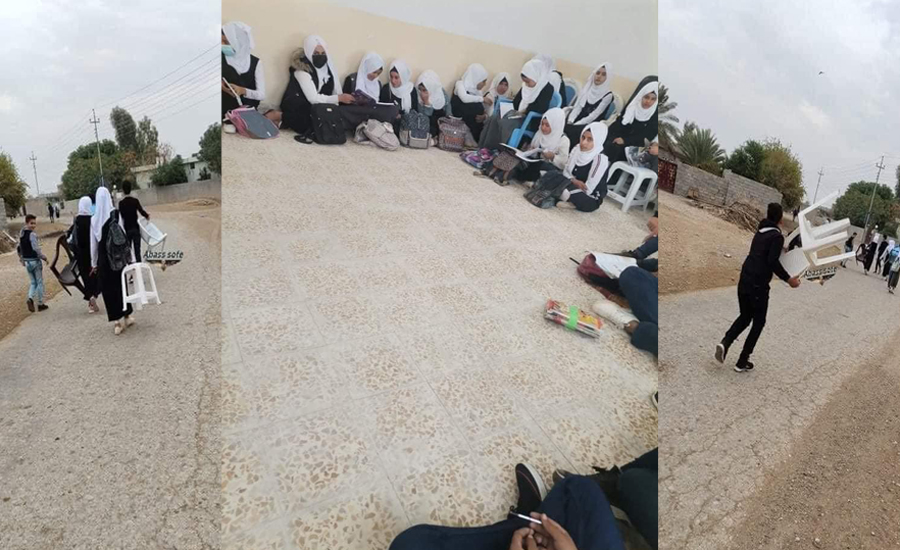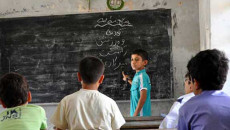Civic activists are lately circulating heartbreaking photos of pupils in a school of a district northeast of Baghdad where some of them sit on the floor in their classrooms, while others bring chairs from their homes to sit on it
The photos shared two days ago on social media networks where circulated by activists who launched a campaign to address this problem of Rania Intermediate School of Khanaqin district taking class education in miserable condition.
"With the start of the new school year, we faced the problem of lack of seats. The number of our students increased from 120 to 140 students, so some students had to sit on the floor during the lessons," said Abdullah Ibrahim, School Principal.
Some students sit on the floor during the lessons
Ibrahim said the General Directorate of Education in Khanaqin, under Iraqi ministry of education, decided to provide the school with 70 seats.
The students of Rania School are of the Arab component and study in Arabic language. The school building is in good condition and includes six classrooms.
In addition to the lack of seats, the school suffers from a shortage of textbooks and some other supplies, such as a blackboard.
The multi-ethnic district of Khanaqin, on the border with Iran, is part of the disputed territories between Baghdad and Erbil which runs through the oil rich city of Kirkuk up to Shingal west of Ninewa on the border with Syria.
Currently, less than 2,000 pupils attend 25 Kurdish primary schools, class 1-6, run by Baghdad while there are only two schools for 30 pupils of secondary schools, class 7-9.
Currently, there are 30,000 pupils in 45 Arabic schools, compared to 5,225 pupils in 34 primary, secondary and preparatory schools teaching in Kurdish language.
KirkukNow tried to contact the school's students and teachers, but none of them were willing to make statements.
Muhammad Shakir, head of the Khanaqin branch of the Kurdistan Teachers Union said he is not aware of this problem, nor did he talk about attempts to address the students' problem.
Sarkawt Ali, a civil activist in Khanaqin, Rania School is not the only one that suffers from these problems. "There are four schools facing the same problems, especially with regard to the lack of seats for students."
There are four schools facing the same problems
Ali denied that officials in Khanaqin district are not aware of the problem.
Last year, the efforts of a number of Khanaqin activists and some donors resulted in the provision of 3,000 seats to Khanaqin schools.
"There is a huge shortage of school supplies, which has not been addressed yet," said Ali, who is currently trying to fill in shortages of these schools.
Ali Hussein, director of Khanaqin Education, which is affiliated with the Iraqi Ministry of Education, did not respond to (KirkukNow) calls regarding the problems of Khanaqin schools.
Khanaqin district schools are divided between the Ministries of Education in the federal government in Bgahdad and the Kurdistan Regional Government KRG in Erbil which follow different curricula and educational systems.
Iraq’s education infrastructure is in ruins in many parts of the country; one in every two schools is damaged and needs rehabilitation, says a report by UNICEF about education in Iraq.
A number of schools operate in multiple shifts in an attempt to accommodate as many students as possible, squeezing the little learning time that children have.
The KRG has opened special directorates for Kurdish education in the disputed territories of Kirkuk, Nineveh and Diyala which alike its Kurdish counterparts in Iraqi Kurdistan Region IKR suffer lack of budget for accurate monthly payroll and shortage of staff, curriculums and utilities.






